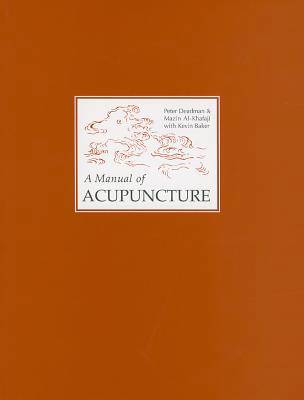
- Afhalen na 1 uur in een winkel met voorraad
- Gratis thuislevering in België vanaf € 30
- Ruim aanbod met 7 miljoen producten
- Afhalen na 1 uur in een winkel met voorraad
- Gratis thuislevering in België vanaf € 30
- Ruim aanbod met 7 miljoen producten
Zoeken
Omschrijving
Once in a great while an extraordinary book is published that sets an entirely new standard in its field. A Manual of Acupuncture, published by Journal of Chinese Medicine Publications, is just such a book. Painstakingly researched over many years by Peter Deadman, editor-in-chief of The Journal of Chinese Medicine, and colleagues Mazin Al-Khafaji and Kevin Baker, this book has become the primary reference in the West for the study of acupuncture points and channels. With the subtle use of color to illustrate the acupuncture points and anatomical features, the new second edition of A Manual of Acupuncture is even more attractive and user-friendly than the first. Introductory chapters describe and illustrate the channels and collaterals, the various categories of points, and methods of selection, location, and needling. Ensuing chapters present each of the points of the 14 channels as well as the extra (miscellaneous) points, identified by their English and pinyin names, and Chinese characters. Each point is located in accordance with the most exacting anatomical standards to be found in any Western textbook. For each point there is a dedicated drawing, followed by regional body drawings. The quality of the 500 drawings is far superior to those in any other TCM text. There are also practical pointers for finding and needling the points, and cautionary information about what to avoid. In addition to point indexes by their English and pinyin names, there is an index identifying every part of the body reached by each of the channels, and separate indexes of point indications listed according to both TCM and biomedical symptoms.
Specificaties
Betrokkenen
- Auteur(s):
- Uitgeverij:
Inhoud
- Aantal bladzijden:
- 675
- Taal:
- Engels
Eigenschappen
- Productcode (EAN):
- 9780951054659
- Verschijningsdatum:
- 1/06/2007
- Uitvoering:
- Hardcover
- Formaat:
- Genaaid
- Afmetingen:
- 226 mm x 287 mm
- Gewicht:
- 2766 g

Alleen bij Standaard Boekhandel
+ 483 punten op je klantenkaart van Standaard Boekhandel
Beoordelingen
We publiceren alleen reviews die voldoen aan de voorwaarden voor reviews. Bekijk onze voorwaarden voor reviews.











